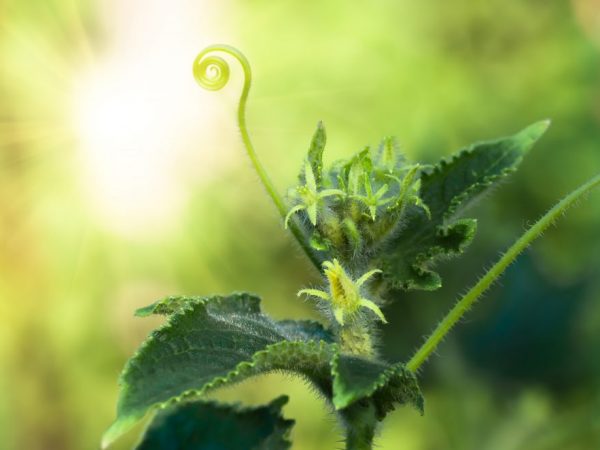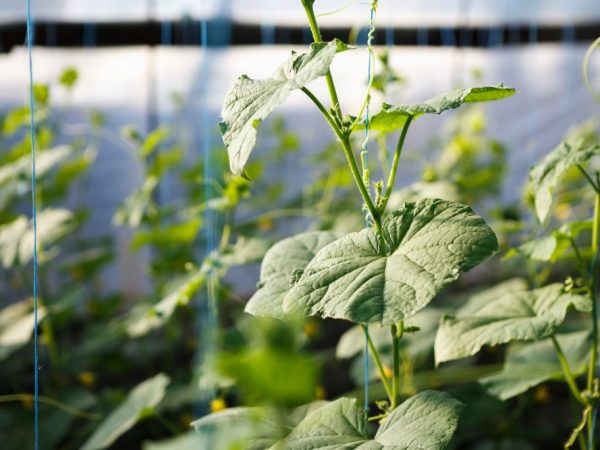Schemes for pruning cucumbers in a greenhouse
Pruning cucumbers in a greenhouse is a must when growing a vegetable crop: it allows you to get a large harvest. Carrying it out according to a certain scheme and the correct formation of a cucumber plant makes it possible to achieve good results.

Schemes for pruning cucumbers in a greenhouse
Purpose of trimming
Pruning cucumbers in the greenhouse is the process of forming a cucumber bush in order to reduce its foliage and shoots in order to obtain maximum nutrition for the plant when setting and developing fruits.
It is easier to grow cucumbers in greenhouse conditions in unstable weather than in open soil, but timely pruning of cucumbers in a closed greenhouse with limited space makes the growing process as convenient and correct as possible.
Pruning cucumbers when grown in greenhouse conditions has several positive effects, it is:
- contributes to the preservation of strength by the plant at the beginning of the fruiting stage;
- allows you to grow fruits of the correct shape;
- distributes the direction of mineral nutrition towards the development of ovaries, and not to an active set of green mass;
- reduces the thickening of cucumber plantings, preventing the occurrence and spread of diseases and fungal infections, providing air intake and improving the ventilation of greenhouse structures;
- provides easy accessibility for the care of a vegetable crop when loosening, weeding and spraying.
Pruning cucumbers in the greenhouse saves time.
Basic approaches to pruning
Pruning should be carried out depending on the method of pollination of the cucumber variety and the type of plant (bush or weaving). However, there are a number of general principles on which any properly organized pruning of cucumbers in greenhouses is built:
- you should not cut the bushes earlier than 10 days from the moment of planting in the greenhouse;
- before the procedure, a garter of bushes is carried out;
- use an exceptionally clean sharp instrument to avoid infection;
- after that they do not leave sticking stumps;
- all inflorescences and shoots in the lower part of the plants begin to be removed from the first 4-5 leaves;
- the top of the lashes is not torn off by hand, but cut off with a tool.
A properly formed bush will allow you to assess the quality of pruning. It should resemble an isosceles triangular shape upside down. This shape provides a uniform load on the center, giving air access to the lower leaves.
After pruning cucumbers, the bushes are periodically inspected, and the growing lashes are guided and attached to the trellis supports, repeating the event as they grow back. It is recommended to plan pruning in the early morning, so that by the onset of the evening, the cut site of the plant is dry and tightened.
Timing
The timing of the pruning of cucumbers in the greenhouse is related to the growth rate of the stepsons. At the same time, the beginning of the event falls on the period when their length has reached 5-6 cm. This length of the stepsons is considered optimal so that the vegetable crop is not injured.If the length of the stepsons 3-5 knots is exceeded, the cutting procedure is repeated.
Pruning scheme for parthenocarpic species

Follow the instructions
The scheme for pruning parthenocarpic cucumbers in a greenhouse involves creating a sufficient level of illumination for these varieties. Self-pollinated cucumbers do not need insect pollination and do not depend on artificial pollination.
A step-by-step instruction for the formation of self-pollinated varieties in one stem involves several stages.
- Initially, on the main stem, where 1/3 of the total crop is formed, all flower ovaries and lateral processes in the axils are removed from below. Pruning begins with a growth distance of 2 leaves to 4, without removing the foliage. Such an event is carried out when the main stem has grown by 0.5 m. Pruning allows air to circulate freely at the bottom of the vegetative part, preventing the development of root rot.
- A second pruning zone is located at a distance of up to 1 m in height. The side shoots are left with one cucumber and two leaves, removing the shoot growth point. The stepsons are left up to 20 cm long.
- The cucumber lash that has reached the height of the greenhouse is rolled up in a ring and tied with twine to the ceiling structure of the greenhouse so that the shoot grows and bears fruit, but the very top of the lash is pinched. At this stage, it is important not to direct the cucumber whips downward: this growth negatively affects the yield.
Pruning scheme for bee-pollinated species
Cultivation of cucumbers in greenhouses, requiring pollination by insects, occurs with the formation of a bush according to a scheme involving multi-stem pruning. These varieties of vegetable crops are distinguished by the fact that their main stem is full of male inflorescences or barren flowers, and female flowers grow on lateral processes.
To activate the branching of bee-pollinated varieties, it is important to pinch the main stem over 5-6 leaves.
Pruning of cucumbers pollinated by insects is carried out according to a certain technology, taking into account the peculiarities of the plants:
- the lateral stepsons do not form until the first ovary appears;
- young shoots are attracted to the central stem and entwined around it, at the same time correctly cutting off interfering processes and whiskers;
- at the bottom of the stem in the axils of 2-3 leaves pluck out the growth points of the lateral shoots;
- in the next part, 1 fruit and a pair of leaves are left, removing the growth point of the processes;
- in the middle part of the plant, at a height of up to 1 m, 2 fruits and 2 leaves are left;
- in the upper part, 3 fruits and 3 leaves are left.
Conclusion
You can trim cucumbers in one of several ways, depending on the types of vegetables you are growing. If you follow the rules of the procedure, pruning does not harm the plants.


